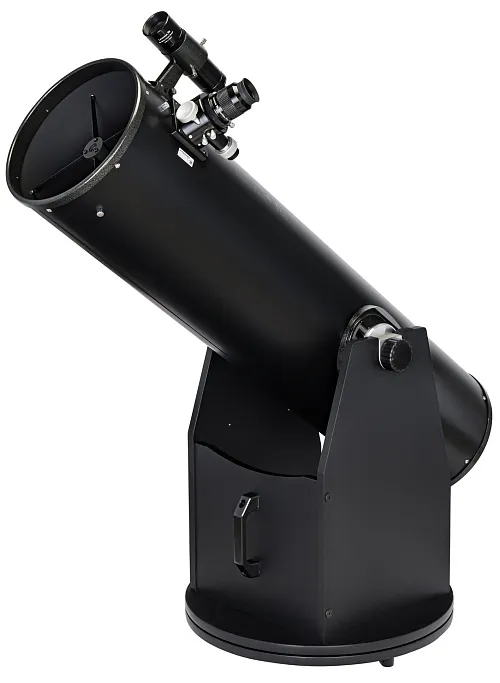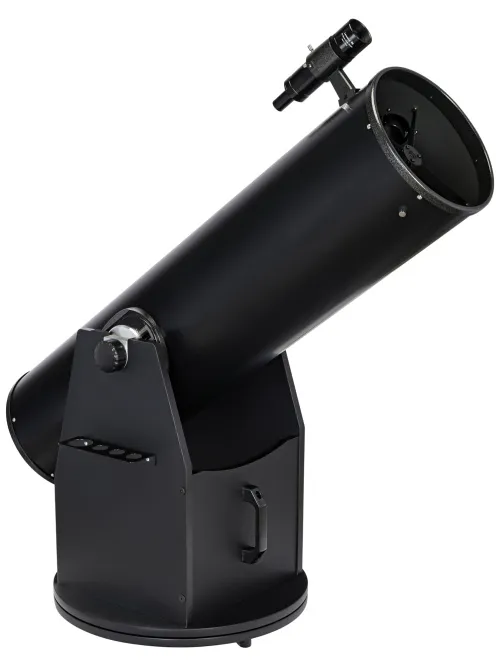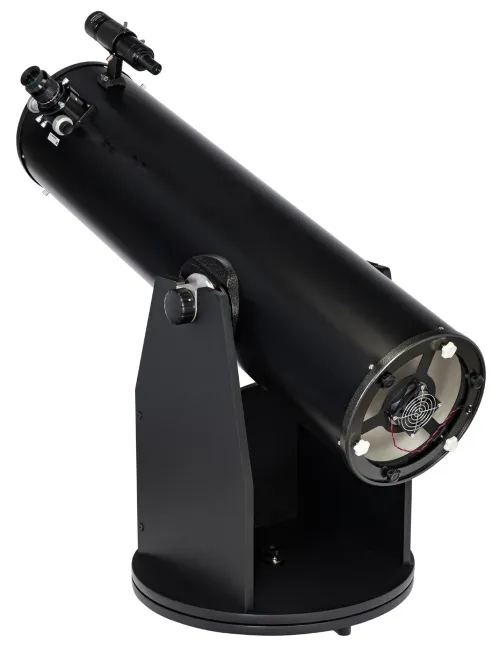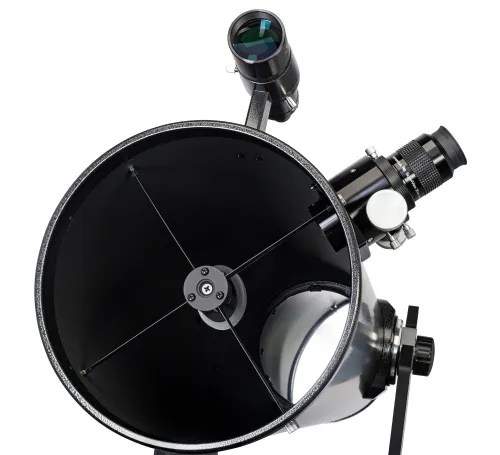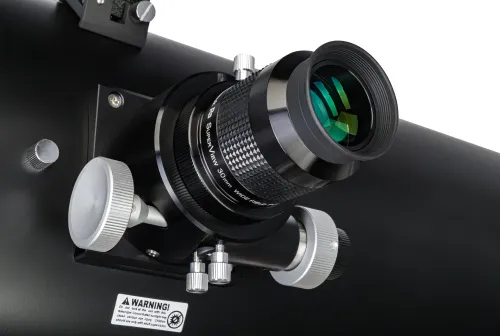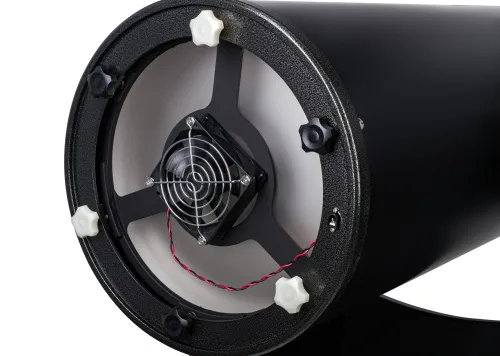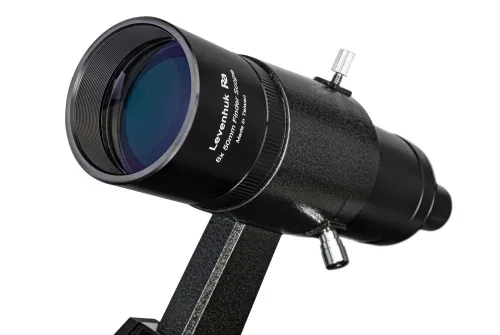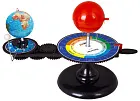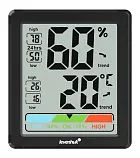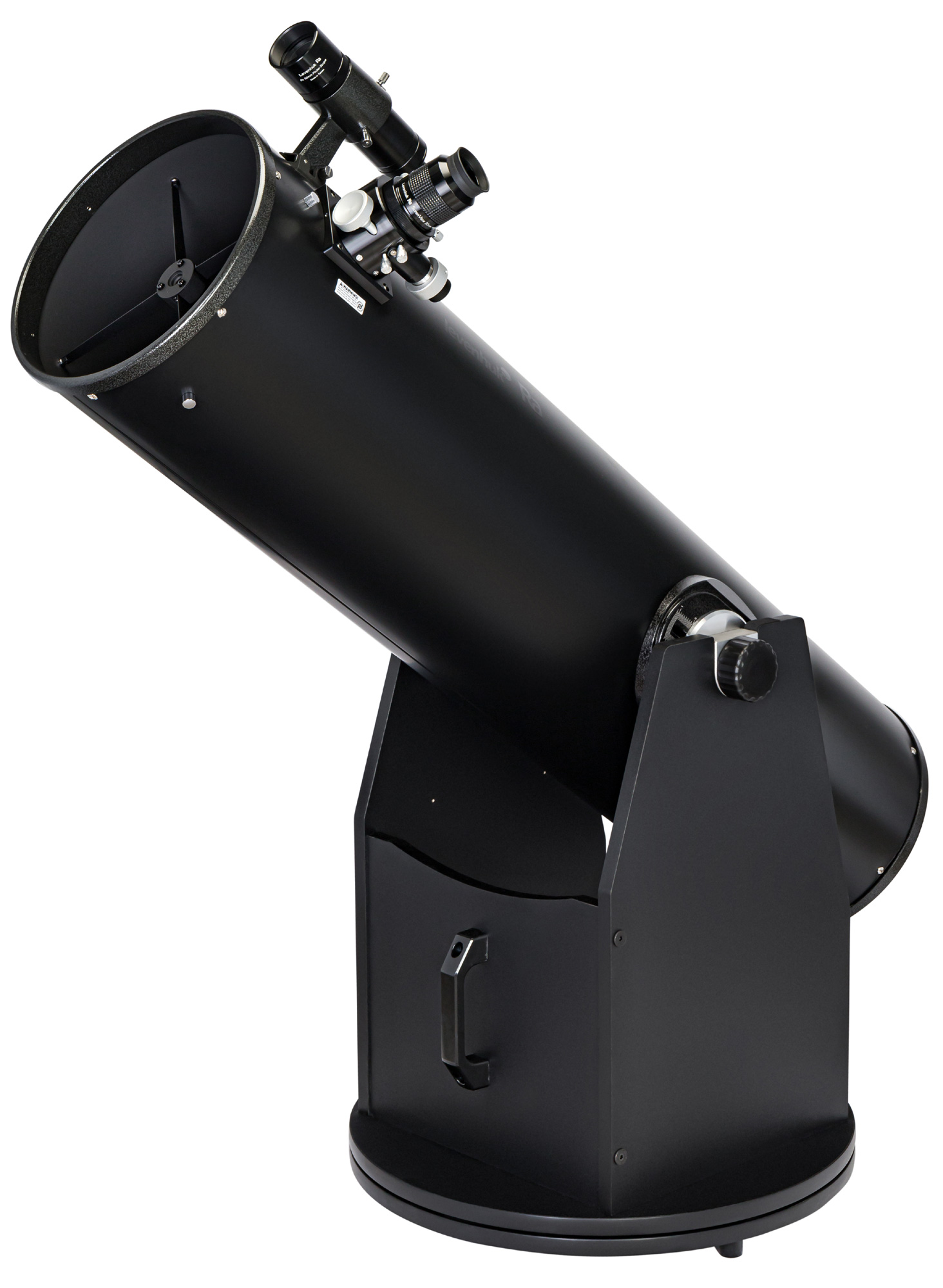Levenhuk Ra 250N Dobson Telescope
Newtonian telescope with a built-in primary mirror cooling fan. Aperture: 250mm. Focal length: 1250mm
| Product ID | 50749 |
| Brand | Levenhuk, Inc., USA |
| Warranty | lifetime |
| EAN | 5905555002613 |
| Package size (LxWxH) | 55.5x22.4x19.3 in |
| Shipping Weight | 86.3 lb |
Levenhuk Ra 250N Dobson is a Newtonian reflector with a 250mm diameter primary mirror. Its optics allow for observing thousands of deep-sky objects in detail that cannot be observed with small-aperture telescopes. You can also use this telescope for outer space exploration. For example, you can observe small structures on Mars's surface, details in the atmosphere of Jupiter, the Encke gap within Saturn's rings, and even a satellite of Neptune, Triton. It is an excellent optical instrument for visual observations of space that is best suited for trips to the countryside.
Parabolic primary mirror with active cooling of the optics
The parabolic primary mirror creates a clear image free from optical distortion, even at extreme magnification. Its surface is covered with an aluminum coating that reflects 92~96% of light improving image quality. Due to the dual-speed Crayford Focuser, the focus can be smoothly adjusted.
The primary mirror features a cooling system that runs on batteries (purchased separately). If any telescope is moved from a warm room to a cold street and vice versa, the optics will take several hours to “cool down”. The built-in fan speeds up temperature stabilization almost twofold.
Stable and reliable Dobsonian mount with a brake system side bearing for smooth tube movement
The Dobsonian mount is easy to assemble and handle. It reliably holds the optical tube and allows you to carry out long-term observations with maximum comfort. The mount mechanics has been improved. Now, the movement of the tube is smooth so that tracking objects at high magnification is much more comfortable.
A special brake system side bearing for smooth tube movement allows you to move the optical tube a few centimeters up or down. There are scales on the mount sides for convenient balancing. In addition, the bearings have a more robust design (compared to conventional ones), and so they will run smoothly throughout their entire service life.
Quick start kit
The telescope kit includes base accessories that allow you to start observations right away. 9mm and 30mm eyepieces are ideal for your first introduction to deep space. An 8x50mm optical finder is used to search for objects.
Features:
- Reflector with a high aperture, ideal for deep space observations
- Parabolic primary mirror - no distortion even at extreme magnification
- Special aluminum coating with a reflectivity index of 92~96%
- Active cooling of optics for faster temperature stabilization
- User-friendly and easy-to-assemble Dobsonian-style mount
- Dual-speed Crayford focuser, brake system side bearing for smooth tube movement
The kit includes:
- Telescope optical tube
- Dobsonian mount
- Plössl 9mm eyepiece
- Super View 30mm eyepiece
- Finder 8x50mm
- Finderscope base
- Cooling fan
- User manual and lifetime warranty
| Product ID | 50749 |
| Brand | Levenhuk, Inc., USA |
| Warranty | lifetime |
| EAN | 5905555002613 |
| Package size (LxWxH) | 55.5x22.4x19.3 in |
| Shipping Weight | 86.3 lb |
| Optical design | reflector |
| Optical scheme | Newtonian |
| Optics material | BK-7 |
| Optics coating | aluminum |
| Primary mirror diameter (aperture), in | 9.8 |
| Secondary mirror obstruction, in | 2.5 |
| Lens (mirror) shape | parabolic |
| Focal length, in | 49.2 |
| Highest practical power, x | 508 |
| Aperture ratio | f/5 |
| Resolution threshold, arcseconds | 0.5 |
| Limiting stellar magnitude | 14.7 |
| Eyepieces | Plössl 9mm (138x), Super View 30mm (41x) |
| Eyepiece barrel diameter, in | 1.25/2 |
| Objective lens obstruction: by area | 0 |
| Objective lens obstruction: by diameter | 25 |
| Finderscope | optical, 8x50 |
| Focuser | 2", Crayford, dual-speed |
| Accessory tray | ✓ |
| Telescope control | manual |
| Mount | Dobsonian |
| Mount material | wood |
| Additional | primary mirror cooling fan |
| Operating temperature range, °F | 23...+95 |
| Optical tube material | metal |
| User level | experienced users, professionals |
| Assembly and installation difficulty level | complicated |
| Observed object | deep-sky objects |
Convenient diagrams that describe how to install additional accessories on refractors and catadioptric telescopes
Find out how to assemble a telescope on an example of the Levenhuk Skyline 90x900 EQ telescope
This short guide will help you avoid typical mistakes and learn more about telescope and mounting types
The basics of astronomical observations for beginners
In this article we have gathered answers to some of the most frequently asked questions about telescopes
The most interesting celestial objects you can observe with Levenhuk telescopes
How telescopes work?
You can actually perform observations from your balcony!
All about telescope sizes, types, magnification, and mounts
Learn how to set up and use the telescope properly
Astronomy in light-polluted skies. Find out what you can observe in the city
Read an interesting comprehensive article on telescopes for little astronomers
The pictures are made with Levenhuk telescopes
Celestial objects you can observe with telescopes of different apertures
Colored and vivid images of galaxies, planets and star clusters entrance everyone who is fascinated by boundless space
Find an interesting review on the history of the changes to a refracting telescope
To make the process of choosing a telescope easier, we will tell you about the characteristics of the most popular types of telescopes today
Learn everything you need to know about refractor telescopes to make the right choice
I started my observations with The Ring Nebula (M57) in the constellation of Lyra. I could clearly see a misty ring, with a noticeable dark hole in the middle.
Then I found M13 - great globular cluster in Hercules. The star cluster was seen pretty well, individual stars could be seen throughout the area of the cluster up to the center. Yet I couldn't see The Veil Nebulae, I only saw the central star but not the nebulae itself... have to wait till August I guess.
I didn't have much more time cause the skies started to light up... and I chose the wrong spot to observe - part of the sky on the south was blocked by a building.
I observed with both standard eyepieces that come with this telescope. I especially liked the 2 inch eyepiece - wide angle of view allows observing vast star fields. Wide angle eyepieces are very useful tools indeed! I heard that with Levenhuk Ra 250N Dob you can discern colors of stars and some very bright nebulae. I'm not sure about nebulae (maybe it's true for Orion, I will definitely try it out) but I really can see difference in colors of some bright stars.
In general, I'm really happy with my Levenhuk Ra 250N Dob. Even without adjustment and with such a bright sky image quality was still very good.
The telescope's quite heavy... Thought I think I can handle even 300 mm ota, but it's not really convenient to carry such a monster around in the city. Plus it's more expensive. So I think I chose wisely. But when I read that with 300 mm you can see colors in deep-sky I feel a bit of jealousy, so maybe one day I'll go for it, but for now I'm quite happy with 250 mm.
Which Barlow lens you would recommend me to buy additionally?
How to achieve the maximum useful magnification?
What objects can I observe at this magnification?
Thank you.
The first observations. Saturn - under a relatively peaceful atmospheric conditions we observed Cassini gap and 3 satellites. Leo Triplet . Nebula Bode, Cigr galaxy, M106, Whirlpool galaxy (and both parts separately), Pinwheel Galaxy ( M101 to the extent possible), globular cluster M3 (and it was resolved into individual stars in 9mm plessl, very nice), M90. Scorpio: M4, M80, M19, Coma: M53, M64 (black eyes), Hercules: The M13 (Great Hercules Cluster ), M92, Chanterelles: M27 ( the Dumbbell Nebula ), Lyra: M57 (the Ring in Lyra ), Sagittarius: NGC 6530.
Conclusions . The telescope requires calm atmospheric conditions with low turbulence. Good for deep-sky objects . Useful for planetary observations, but its main purpose - Deep-Sky Objects .

